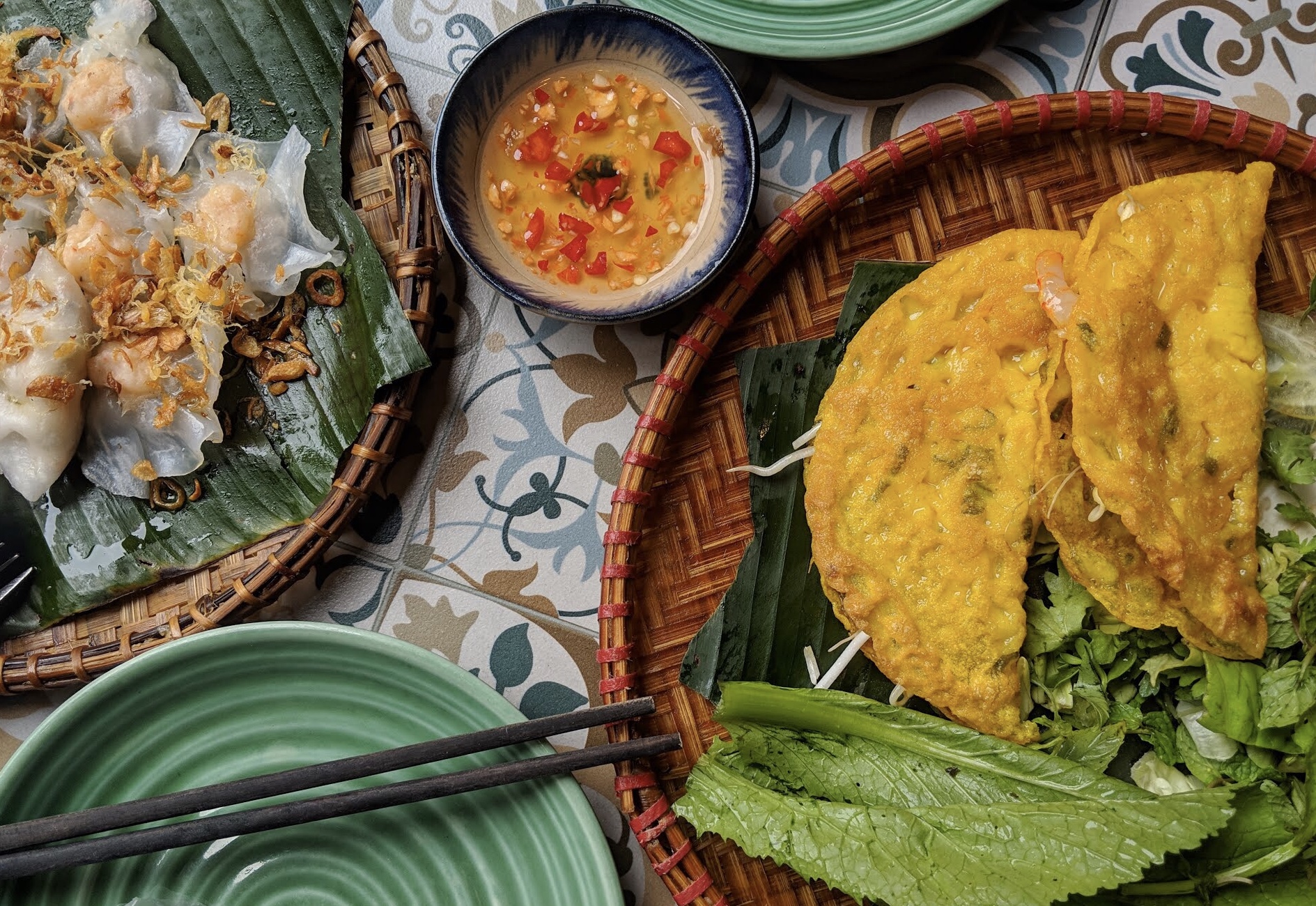After our quick overnight in Hạ Long Bay we headed south to Hội An for a two night vacation-from-vacation. While the frenetic pace of the city can make for exciting travel, it was nice to escape to a smaller and more low-key destination for a few days to relax.
Hội An itself has a population of only 120,000 and the Ancient Downtown is a UNESCO World Heritage Site. It’s been inhabited by various populations for over 2000 years and has played a key role as a trading port, political center, and now as a popular tropical tourist destination for both domestic and international travellers.
We stayed about a 10-minute drive outside of Downtown at a very laid-back Resort & Hotel called Victoria Hội An. The Resort itself is right on the ocean, and despite rainy conditions most of the time we were there, it was a beautiful property and stretch of coastline dotted with palm trees and some of the largest surf we’ve ever seen.


Alicia was very adamant about getting some pool time in, and so despite the rains she suited up and got her swim in.

The old town is one of the most beautiful little towns we’ve ever visited. Perhaps the rains brought out the vibrancy of the flowers and foliage more than other places we’ve been, but even still, the bright yellow stucco buildings, ancient tile work and heritage architecture create a stunning environment – a photographer’s paradise.








With the influx of tourism in recent years, Hội An has also become a hotbed for custom tailors, shoemakers, and leatherworkers, all of which excitedly try to lure you into their shops promising 24-hour turnarounds and top-quality textiles for custom suits, dresses, shoes, bags, and the like.
In contrast to the counterfeit leather challenges we found in parts of Italy, Hội An has a totally different dynamic. The local economy is leveraging below market labour rates rather than counterfeit raw materials, meaning you can get a really good quality product at about 30-50% of what you’d pay domestically.

Hội An also is also home to a surprisingly rich food culture; one we dug in deep on. Most places we’ve travelled have local ‘specialties’ or dishes native to their region, but in reality, their uniqueness has fallen victim to globalization, and they can often be found at comparative or better quality in most cities around the world (see: pizza in Rome).
Two of the dishes most renowned Hội An are called Cao lầu (Rice Noodles with Pork) and Banh Bao Vac (Rose-shaped Shrimp Dumplings).

Cao lầu is truly native to Hội An because all restaurants that make it fetch the water for the noodles from the same local well that is fed by a highly alkaline water. When incorporated with a brown rice flour, the combination turns into a delicate but slightly chewy noodle almost akin to Japanese Udon, but less refined.
We had Cao lầu at 4 of 8 meals over two days as we knew we wouldn’t be able to find it anywhere else. Like many other Vietnamese noodle dishes, it’s served with roasted pork loin, a light but flavourful fish-sauce based broth, lots of fresh herbs, and sliced chiles. Despite the appeal of the traditional accompaniments and familiar broth, it’s the unique combination of the brown rice and local water that bring the noodles forward as the star of the show.

Also unique to Hội An are a type of local ground shrimp dumplings called Banh Bao Vac or ‘Rose Dumplings’, as named after their appearance, loosely similar to that of a White Rose.
They are served with fried onions and garlic and a small side of vinegar, chiles and fresh garlic for dipping. The reason they are native to Hội An is because they are actually all made by a single family, and then supplied to all restaurants (even our hotel) in the area. We must have had 30 in our two days in Hội An. Outstanding.

One of our meals was a slightly more ubiquitous one, the Bánh mì. We went to a spot made famous by Anthony Bourdain on one of his “No Reservations” episodes. The shop was easy to find – just look for the longest line and you know you are in the right spot! We got to thinking how much someone like Bourdain could change the lives of these families, just by stopping by and taking a few photos at their food stalls. Bourdain loved Vietnam; it was good to eat here and feel a bit of a connection to his love for the country and cuisine.
Below you can see one of the sandwiches being made; they churn these baguette-style sandwiches out in about 15 seconds – filling them with pâté, grilled pork, head cheese, cucumber, carrot, fresh herbs, and a few different sweet & hot sauces. As we found in Hanoi, this cross between French and Vietnamese cuisine is one of the reasons we are coming to love the food here.


From Hội An we take off to the largest city in Vietnam, Ho Chi Minh City, for four nights, before heading out to the Mekong Delta for a five-day bicycle trip!

- M&A



